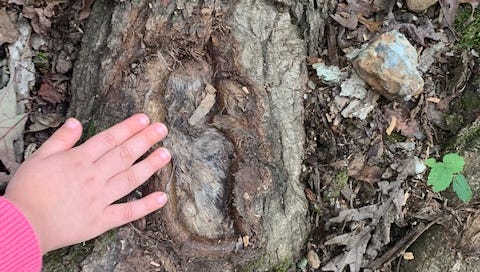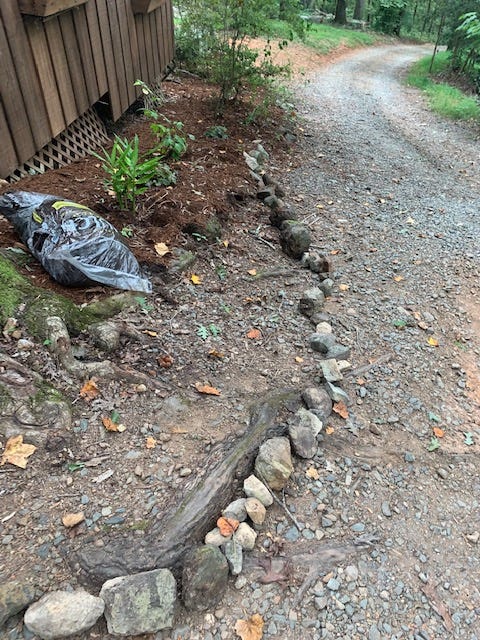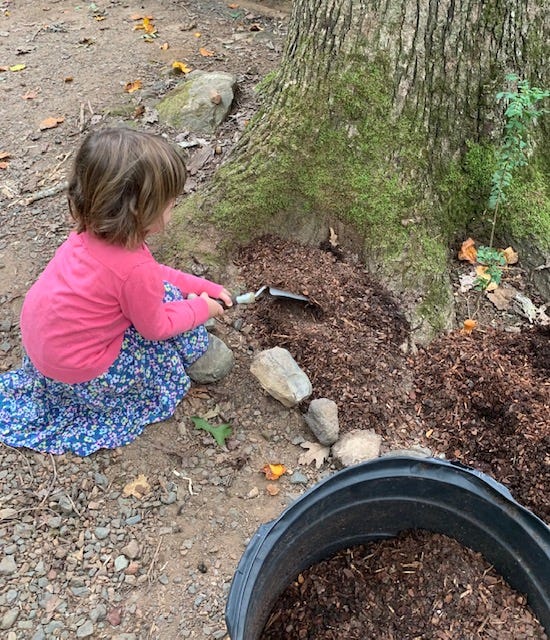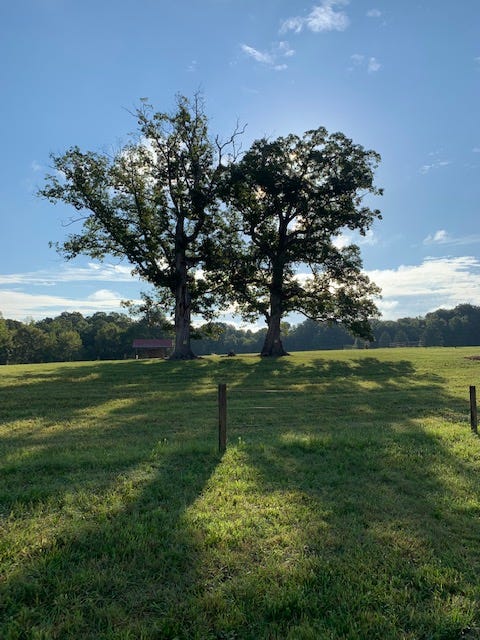When I asked Bea about her “oldest, best thing”—she said it was probably the oak tree outside her window. This beautiful oak filters light to the (many!) plants she is growing and propagating, and, of course, does the important tree work of transforming carbon dioxide into oxygen. “When I was little, it helped me sleep,” she told me. “I’d look at the scraggly branches and twigs making shapes and imagine scenes, especially in the winter. I just love it.”
Another important thing that trees do is protect other trees—in windstorms, trees slow the wind (did you know that wind speeds in hurricanes are measured at airports, where there are no trees?). Here is an excerpt from an interesting article we found on NC Sea Grant’s Coastwatch:
“Significant wind speed reduction begins at the top of the first surface features the wind strikes,” [Spencer Rogers, North Carolina Sea Grant’s coastal construction and erosion specialist] says. “At the airport, that’s grass and pavement. At your house it’s the treetops or — if you don’t have trees — it’s your roof.”
According to Rogers, recent studies from Florida have found surprisingly large reductions in wind speed in locations where trees were even widely spaced. “Anyone planning to protect their house by cutting their trees should ask themselves, ‘How will higher wind speeds affect my home?’”
They also reduce erosion, provide cooling shade and homes for animals, and, of course, are great places to play.
We have a lot of mature trees close to our house, and want to keep them healthy. We recently met with an arborist who talked with us about assessing tree health.
Here are a few key things he told us:
-Healthy trees in a forest of tall trees (like ours) should not have too many low branches beneath the canopy, or leaves at the bottom. These are called suckers, and are your tree’s attempt to make more food through photosynthesis. You can prune them, but they also might be a sign that your tree is decaying or under stress. Keep an eye on trees with suckers.
-Erosion is another source of tree stress, because it can expose the roots and leave them vulnerable to injury. This was true of an oak tree near our living room. The tree is very tall and straight and healthy, but one of its roots under our driveway was becoming exposed, and sometimes cars were backing over the roots, damaging them. “Do you really need this much driveway?” the arborist asked me, pointing to a visible root-wound (pictured above). The answer was no, and so the girls and I collected rocks from the woods and used them as a barrier, expanding the mulched bed around the tree. Harriet helped me spread the mulch over the exposed, damaged root.
-Finally, if you’re like us you might have a few Ninjalines or Slacklines attached to your trees. These are so much fun, but if you use the straps that come with the kits, even with the felt tree wraps, you are not doing your trees any favors. The straps (and even the wraps) put stress on the bark, which is a living, growing, necessary part of the tree’s anatomy. It can even damage the tree’s phloem, or inner bark, which is the tree’s pipeline for food. Instead, the arborist (and our friend Cat) suggested using bolts directly screwed into the tree, which is less damaging. This goes for hammocks too. We are going to work on that next.
We want to feature some of your “oldest, best” trees on the Frog Trouble Times—or even just your best, beloved trees! Please email me (belleboggs@gmail.com) a photo, and tell me why you love it. It doesn’t have to be “your” tree—the photo below is of a pair we pass on the way to school, and that I happen to love.
And do you have any good tips about taking care of trees? More next week on our favorite tree-identification books... and some podcasts on tree communication!








I love this photo and look forward to sending you one of my favorites!
i love this post so much! Bea you are like a great wise tree! i love the picture of the great pine tree on the haw and i am thinking of the great sequoia General Sherman and praying no harm will come to it in the terrible fires raging in California! we have agreat huge elm between Miss Janet’s house and ours! the big storm cell we had in Walkerton in July took many of our trees and even blew out all of the windows of Miss Janet’s house( which was built in the 1700’s!) but the house and elm survived and lived to tell the tale!